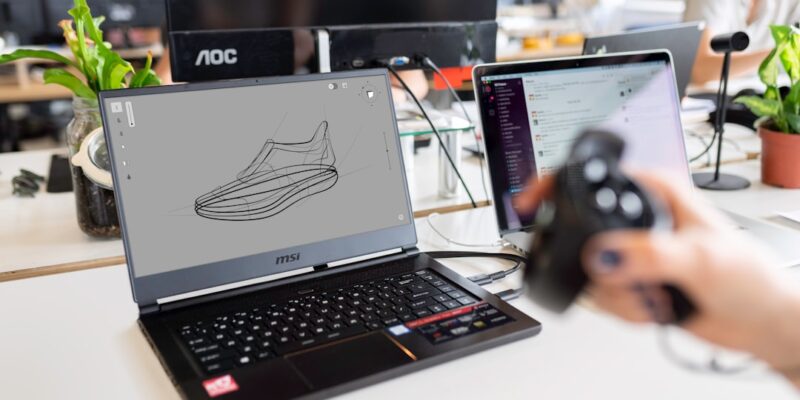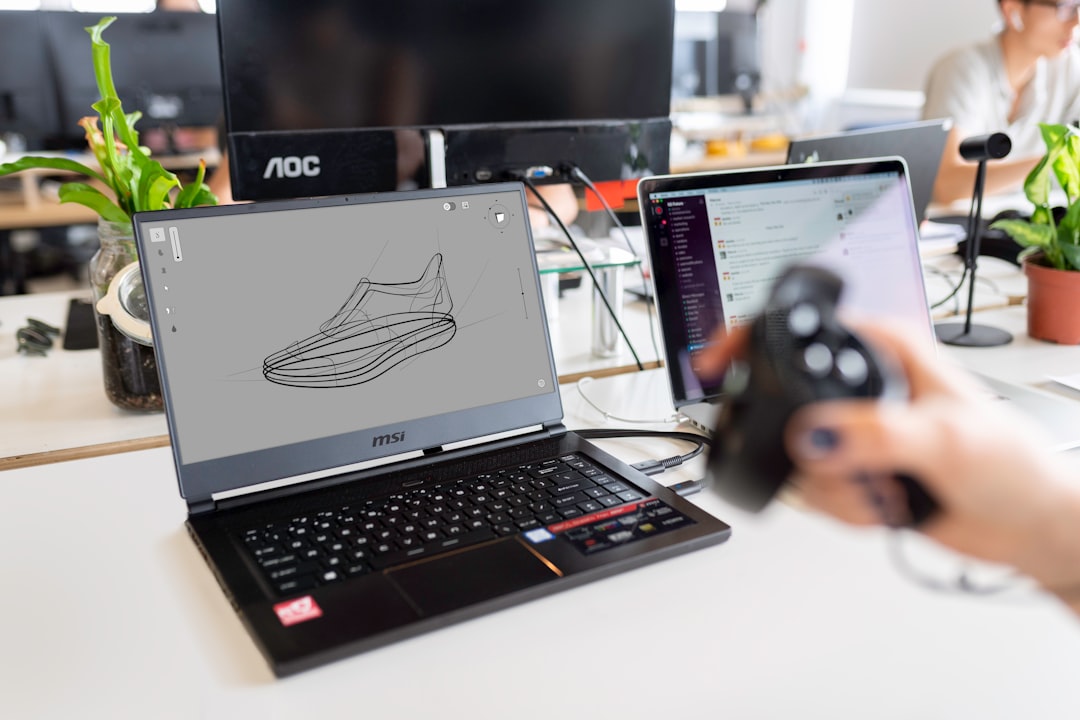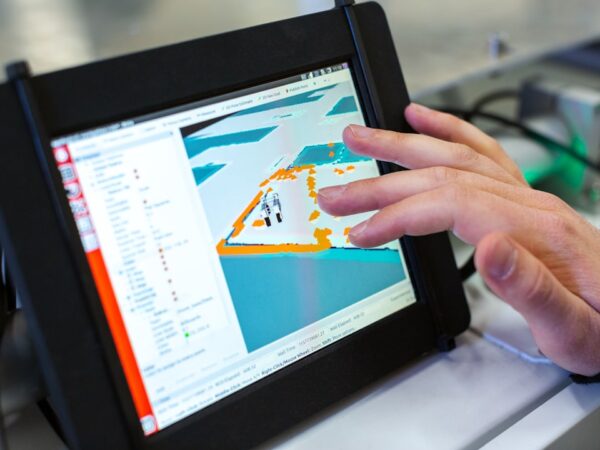
Unlocking the World of NFTs: The Top Software for Creating Your Own Unique Digital Assets
NFTs, or non-fungible tokens, have been making waves in the digital world recently. From art to music to virtual real estate, NFTs have become a popular way for creators to sell and authenticate their digital assets. In this blog post, we will explore what NFTs are, why they are important in the digital world, and how you can create your own NFTs using various software options. Whether you’re an artist looking to showcase your work or an investor looking for a new opportunity, this post will provide you with all the information you need to get started with NFTs.
Key Takeaways
- NFTs are unique digital assets that use blockchain technology to verify ownership and authenticity.
- Creating your own NFTs can provide benefits such as increased control over your digital assets and potential for profit.
- There are various software options available for creating NFTs, including OpenSea, Rarible, and Mintable.
- When choosing NFT creation software, consider factors such as ease of use, cost, and compatibility with your preferred blockchain.
- Look for features such as customizable metadata and the ability to set royalties for future sales when selecting NFT creation software.
- Follow a step-by-step guide to create your own NFTs, including choosing a file format, setting a price, and minting the NFT on a blockchain.
- Design unique and valuable NFTs by considering factors such as rarity, aesthetics, and storytelling.
- Sell your NFTs on marketplaces such as OpenSea, SuperRare, and Nifty Gateway.
- Protect your NFTs from theft and fraud by using secure wallets and avoiding sharing private keys.
- NFTs have the potential to revolutionize the art and gaming industries, with increased opportunities for creators and collectors alike.
What are NFTs and Why are They Important in the Digital World?
NFTs are unique digital assets that are stored on a blockchain, which is a decentralized and transparent ledger. Unlike cryptocurrencies like Bitcoin or Ethereum, which are fungible and can be exchanged on a one-to-one basis, NFTs are indivisible and cannot be exchanged on a like-for-like basis. Each NFT has a unique identifier that distinguishes it from other tokens, making it one-of-a-kind.
Blockchain technology plays a crucial role in the creation and authentication of NFTs. The blockchain provides a secure and transparent record of ownership, ensuring that each NFT is authentic and cannot be duplicated or tampered with. This has significant implications for the digital world, where issues of ownership and authenticity have long been a challenge.
NFTs are important in the digital world because they provide a solution to the problem of ownership and authenticity of digital assets. In the past, it was easy for someone to copy and distribute digital files without permission or attribution. With NFTs, creators can prove ownership of their digital assets and sell them directly to buyers, eliminating the need for intermediaries. This opens up new opportunities for artists, musicians, and other creators to monetize their work and gain recognition for their talent.
The Benefits of Creating Your Own NFTs as a Digital Asset
Creating your own NFTs as a digital asset comes with several benefits. Firstly, it provides a way to establish ownership and authenticity of your digital creations. By minting your work as an NFT, you can prove that you are the original creator and have the rights to sell or distribute it. This can be especially valuable for artists and creators who have struggled with copyright infringement in the past.
Secondly, creating NFTs can be a profitable investment. Just like physical art or collectibles, NFTs can appreciate in value over time. If your NFT gains popularity or becomes sought after by collectors, you could potentially sell it for a significant profit. This has led to a surge of interest in NFTs as an investment opportunity, with some high-profile sales reaching millions of dollars.
Lastly, creating NFTs can provide increased exposure and recognition for artists and creators. The digital art world has traditionally been difficult to break into, with limited opportunities for exposure and monetization. NFTs have changed that by providing a platform for artists to showcase their work to a global audience. By creating and selling NFTs, artists can gain recognition and build a fanbase, leading to new opportunities and collaborations.
Top Software for Creating NFTs: A Comprehensive Overview
| Software | Price | Supported Blockchains | Features |
|---|---|---|---|
| OpenSea | Free | Ethereum, Polygon, Klaytn, Binance Smart Chain | Marketplace, Auctions, Royalties, Bundles |
| Rarible | Free | Ethereum | Marketplace, Auctions, Royalties, Collections |
| SuperRare | Free | Ethereum | Curated Marketplace, Auctions, Royalties, Social Features |
| Nifty Gateway | Free | Ethereum | Curated Marketplace, Drops, Auctions, Social Features |
| AtomicMarket | Free | WAX | Marketplace, Auctions, Royalties, Collections |
There are several software options available for creating NFTs, each with its own features and pricing structure. Here is an overview of some of the most popular options:
1. OpenSea: OpenSea is one of the largest NFT marketplaces and also offers a simple and user-friendly interface for creating NFTs. It supports various file formats, including images, videos, and 3D models, making it suitable for artists working in different mediums. OpenSea charges a 2.5% fee on each sale.
2. Rarible: Rarible is another popular NFT marketplace that allows users to create and sell their own NFTs. It offers a customizable storefront and supports various file formats. Rarible charges a 2.5% fee on each sale, with an additional 2.5% fee for creators.
3. Mintable: Mintable is a user-friendly platform that allows creators to mint and sell NFTs without any coding knowledge. It supports various file formats and offers customizable storefronts. Mintable charges a 2% fee on each sale.
4. SuperRare: SuperRare is a curated marketplace for digital art, focusing on high-quality and limited-edition pieces. It offers a more exclusive platform for artists and collectors, with a rigorous curation process. SuperRare charges a 15% fee on each sale.
How to Choose the Right NFT Creation Software for Your Needs
When choosing NFT creation software, there are several factors to consider:
1. Budget: Some software options may have upfront costs or transaction fees that can eat into your profits. Consider your budget and choose software that aligns with your financial goals.
2. Skill level: Some software options may require coding knowledge or technical expertise, while others offer user-friendly interfaces for beginners. Consider your skill level and choose software that matches your abilities.
3. Desired features: Different software options offer different features, such as support for specific file formats or customization options for your storefront. Consider the features that are important to you and choose software that meets your needs.
The Features to Look for in NFT Creation Software

When choosing NFT creation software, there are several important features to look for:
1. Support for various file formats: Look for software that supports the file formats you work with, whether it’s images, videos, or 3D models.
2. Customization options: Look for software that allows you to customize your NFTs and storefront to reflect your brand and style.
3. User-friendly interface: If you’re a beginner or don’t have coding knowledge, look for software with a user-friendly interface that makes it easy to create and sell NFTs.
4. Integration with popular marketplaces: Look for software that integrates with popular NFT marketplaces, making it easy to list and sell your creations.
Some software options that excel in these features include OpenSea, Rarible, and Mintable. These platforms offer a user-friendly interface, support various file formats, and integrate with popular marketplaces.
Step-by-Step Guide to Creating Your Own NFTs with Software
Creating your own NFTs using software is a relatively straightforward process. Here is a step-by-step guide to get you started:
1. Choose your software: Research different software options and choose one that meets your needs and budget.
2. Set up an account: Sign up for an account on the chosen software platform.
3. Connect your wallet: Connect your digital wallet to the software platform. This will allow you to store and manage your NFTs.
4. Upload your digital asset: Upload the digital asset you want to turn into an NFT. Make sure it meets the file format requirements of the software platform.
5. Add metadata: Add metadata to your NFT, including a title, description, and any additional information you want to include.
6. Set a price: Set a price for your NFT or choose to auction it off.
7. Mint your NFT: Once you have filled in all the necessary information, click on the “mint” button to create your NFT.
8. List your NFT for sale: If you’re using a marketplace like OpenSea or Rarible, list your NFT for sale on the platform.
Tips for Designing Unique and Valuable NFTs
Designing unique and valuable NFTs is crucial for attracting buyers and maximizing your profits. Here are some tips to help you create standout NFTs:
1. Be creative and original: Think outside the box and create something unique that stands out from the crowd. Avoid copying or imitating existing NFTs.
2. Tell a story: Use your NFT to tell a story or convey a message. This can add value and make your NFT more appealing to buyers.
3. Collaborate with other artists: Collaborating with other artists can bring fresh perspectives and ideas to your NFTs, making them more valuable.
4. Offer limited editions: Consider creating limited editions of your NFTs to create scarcity and increase their value.
Understanding the Marketplace for NFTs: Where to Sell Your Digital Assets
There are several popular marketplaces where you can sell your NFTs. Here is an overview of some of the most popular options:
1. OpenSea: OpenSea is one of the largest NFT marketplaces, offering a wide range of digital assets for sale. It has a large user base and supports various file formats.
2. Rarible: Rarible is a decentralized marketplace that allows users to create, buy, and sell NFTs. It offers a customizable storefront and supports various file formats.
3. SuperRare: SuperRare is a curated marketplace for digital art, focusing on high-quality and limited-edition pieces. It offers a more exclusive platform for artists and collectors.
4. Foundation: Foundation is an invite-only marketplace that focuses on supporting emerging artists. It has a rigorous curation process and offers a platform for artists to showcase their work.
When choosing a marketplace, consider factors such as fees, user base, and curation process. Each marketplace has its own pros and cons, so it’s important to choose one that aligns with your goals and target audience.
Best Practices for Protecting Your NFTs from Theft and Fraud
While NFTs offer a secure and transparent way to prove ownership and authenticity, there are still risks and threats to be aware of. Here are some best practices for protecting your NFTs from theft and fraud:
1. Use a secure digital wallet: Choose a reputable digital wallet that offers strong security measures, such as two-factor authentication and encryption.
2. Be cautious of phishing attempts: Be wary of phishing attempts that try to trick you into revealing your wallet credentials. Always double-check the URL and never share your private keys or seed phrases.
3. Research the marketplace: Before listing your NFT on a marketplace, research its reputation and security measures. Look for marketplaces that have a strong track record of protecting user assets.
4. Watermark your digital assets: Consider watermarking your digital assets before minting them as NFTs. This can help deter unauthorized use or distribution.
The Future of NFTs and Their Impact on the Art and Gaming Industries
The future of NFTs looks promising, with continued growth and innovation expected in the coming years. NFTs have already had a significant impact on the art and gaming industries, and this is likely to continue.
In the art world, NFTs have provided a new way for artists to monetize their work and gain recognition. It has opened up opportunities for emerging artists who may have struggled to break into the traditional art market. Additionally, NFTs have challenged the notion of what constitutes art, with digital creations gaining value and recognition alongside physical artworks.
In the gaming industry, NFTs have introduced new possibilities for ownership and trading of in-game assets. Players can now buy, sell, and trade virtual items using blockchain technology, creating a new economy within games. This has the potential to revolutionize the gaming industry and create new revenue streams for developers.
In conclusion, NFTs have become an important part of the digital world, offering a solution to the problem of ownership and authenticity of digital assets. Whether you’re an artist looking to showcase your work or an investor looking for a new opportunity, NFTs provide a platform for creativity, investment, and recognition. By understanding the benefits of creating your own NFTs, choosing the right software, and following best practices for protection, you can navigate the world of NFTs with confidence and success.
FAQs
What is NFT?
NFT stands for Non-Fungible Token, which is a unique digital asset that represents ownership of a specific item or piece of content.
What is the best software to create NFT?
There are several software options available for creating NFTs, including OpenSea, Rarible, SuperRare, and Nifty Gateway. The best software for creating NFTs depends on individual preferences and needs.
What features should I look for in NFT creation software?
When choosing NFT creation software, it is important to consider factors such as ease of use, security, customization options, and compatibility with different blockchain networks.
Do I need to have technical knowledge to create NFTs?
While some technical knowledge may be helpful, many NFT creation software options are designed to be user-friendly and accessible to individuals with little to no technical experience.
What are the benefits of creating NFTs?
Creating NFTs can provide a way for artists, musicians, and other creators to monetize their work and establish ownership rights. NFTs can also provide a unique and secure way to collect and trade digital assets.


















